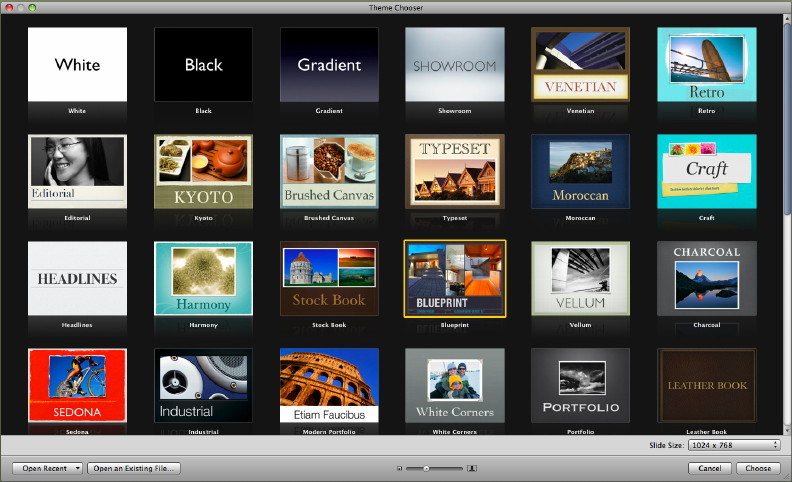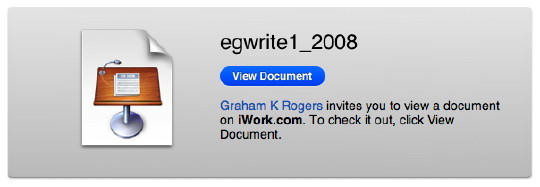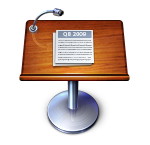|
|
When the trial version of Keynote is opened, we may either buy or try. The purchase can be made online. We then see a panel with a selection of themes: now 44 up from 36 previously. Also new in this Theme panel is the ability to see a selection of the slide masters giving an idea of how slides may appear with images, graphs or text. This has been borrowed from iPhoto: in Events running the mouse over the top image will reveal others in the selection. A similar feature is now found in numbers and for several of the 180 plus templates in Pages.

As before, many of the fine-tuning aspects of Keynote are effected using the Inspector. Some of these attributes include the way a slide, or the sections on a slide appear on the screen, and Apple has added several more effects here, including Perspective and Reflection, which use similar effects to some found in the new iPhoto slideshow.

If we collaborate on a project (writing, spreadsheet or presentation), we need to communicate with other project members to share ideas or suggest changes. Many use simple email, but the number of files and versions can grow and it is easy to lose track. With iWork.com we can share and suggest amendments online, using a browser. Should a hard copy of the file be needed, these can be created in several formats, like PDF or DOC. An icon is available on the toolbar of each of the parts of iWork (if not immediately visible it may need to be added from the Edit Toolbar item in the View menu) and this links to the iWork site. A panel appears for creating the initial account, but I was able to use my Mobile Me details. This service is currently available as a beta, and is expected to be a subscription service when it is known to be stable. I tested this initially with a presentation and sent the link to another email account I use, so was able to view it once uploaded (the 20 slides were an upload of 10.4MB).


While my Macs do have remote control devices that I use for presentations and other features, Apple added a new feature to Keynote with Keynote Remote, a $0.99 download from the App Store [not free as I wrote in the Post article], that links to a presentation and allows control of the display via WiFi from the iPhone or iPod touch.

I used Remote, a new theme and some of the latest transitions in a class just after returning from Macworld. It was clear from student responses that Keynote retains the wow factor.
|
|

 While some were disappointed with MacWorld, updated software in particular showed how Apple continues to develop and improve the applications. Both
While some were disappointed with MacWorld, updated software in particular showed how Apple continues to develop and improve the applications. Both 